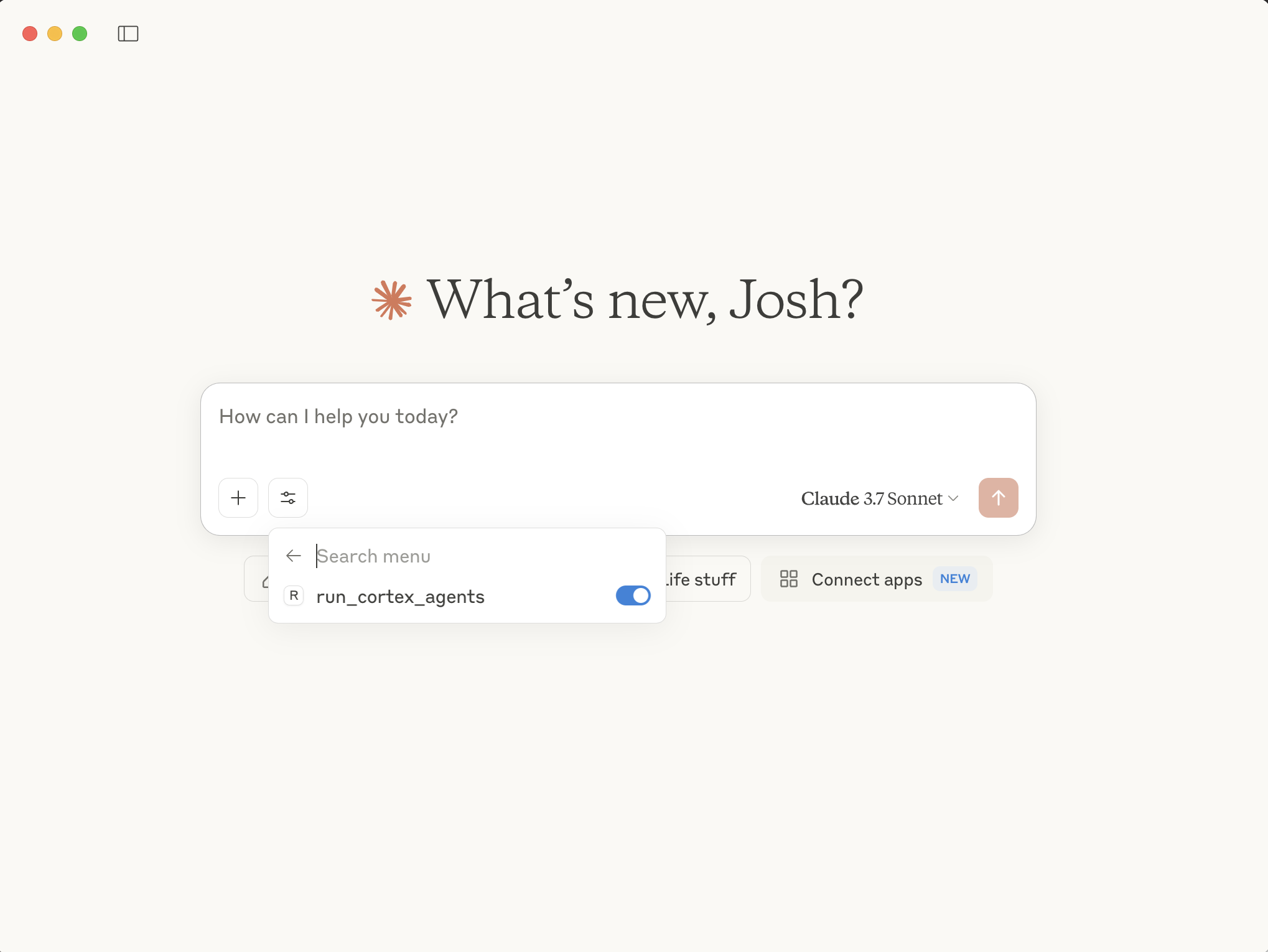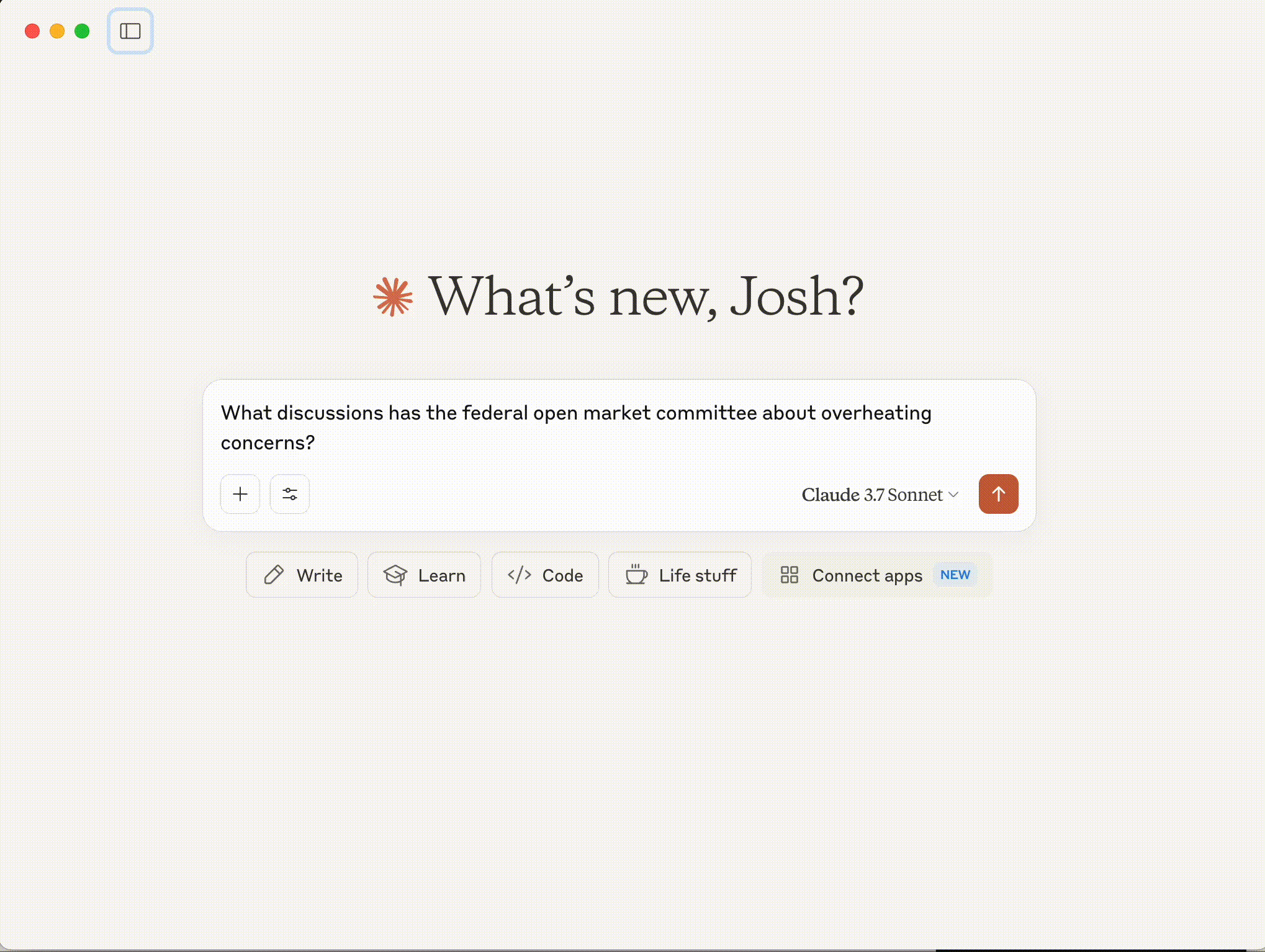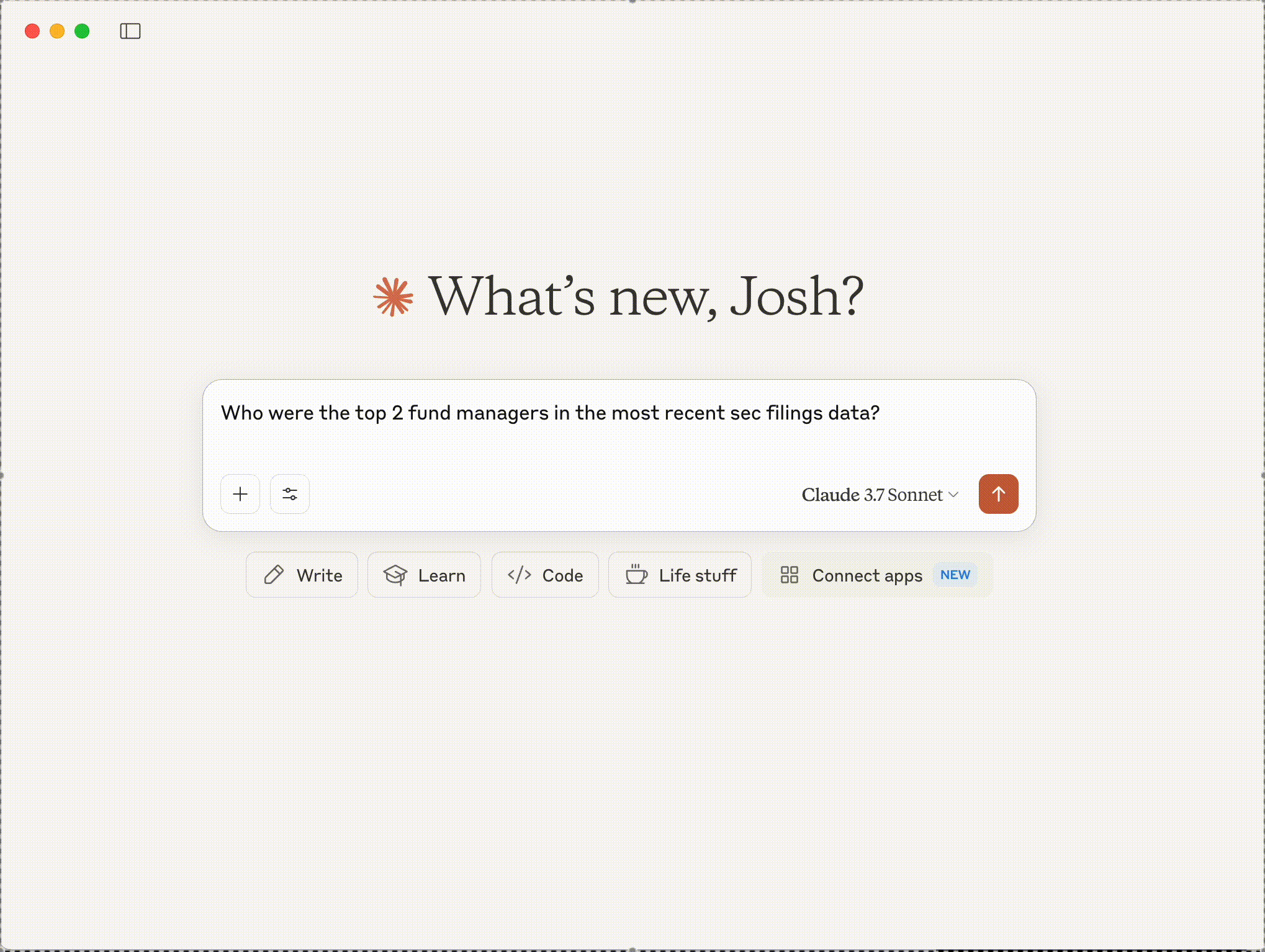This guide walks through how to build your own Cortex Agents MCP Server.
The core functionalities include:
- Allow agents to interact with Cortex Agents as a tool
- Test the connection with Claude Desktop
In this tutorial, we'll build a simple MCP Cortex Agents server and connect it to an MCP host (Claude for Desktop). We'll start with a basic setup, then progress to more complex use cases.
What we'll be building
Many LLMs don't natively orchestrate external "agent" workflows. With MCP, we can expose Cortex Agents capabilities as first-class tools in your chat client.
We'll build a server that exposes one tool:
run_cortex_agents: submit a query to Cortex Agents and get its output
Then we'll connect the server to an MCP host (Claude for Desktop):
Note: you can connect any MCP-compatible client, but this guide uses Claude for Desktop for simplicity. See the official MCP client SDK guide for building your own, or browse other clients.
Prerequisites
- A Snowflake account (sign up for a trial account here)
- Cortex Analyst semantic model and Cortex Search service created, such as via this quickstart
- A Programmatic Access Token created
- Python 3.10+
- Python MCP SDK 1.2.0+
What You Will Learn
- How to create an MCP Server
- How to use Cortex Agents
- How to configure an MCP client to use an MCP Server
What You Will Build
An MCP Server for Cortex Agents.
First install the MCP CLI (uv) and bootstrap your project:
macOS / Linux
curl -LsSf https://astral.sh/uv/install.sh | sh
# restart your terminal to pick up `uv`
Windows
irm https://astral.sh/uv/install.ps1 | iex
# restart your shell
Configure and create your Cortex Agents project:
# Clone the repo
git clone https://github.com/Snowflake-Labs/sfguide-mcp-cortex-agent.git
cd sfguide-mcp-cortex-agent
# Create and activate venv
uv venv
source .venv/bin/activate # macOS/Linux
# .venv\Scripts\Activate.ps1 # Windows PowerShell
# Install MCP SDK and HTTP client
uv add "mcp[cli]" httpx
Set the keys and services needed to run Cortex Agents by creating a .env following the .env.template with:
- SNOWFLAKE_ACCOUNT_URL
- SNOWFLAKE_PAT
- SEMANTIC_MODEL_FILE
- CORTEX_SEARCH_SERVICE
Run:
uv run cortex_agents.py
Note: Leave this (the MCP server) running while you call it from the MCP client.
Install or update Claude for Desktop.
Open your config file:
macOS / Linux
~/Library/Application Support/Claude/claude_desktop_config.json
Windows
%APPDATA%\Claude\claude_desktop_config.json
Add your Cortex Agents server:
{
"mcpServers": {
"cortex-agent": {
"command": "uv",
"args": [
"--directory",
"/ABSOLUTE/PATH/TO/PARENT/FOLDER/sfguide-mcp-cortex-agent",
"run",
"cortex_agents.py"
]
}
}
}
Note: You may need to replace "uv" with the full uv path. You can find the uv path by running which uv.
Launch the Claude for Desktop app.
Now our Cortex Agents MCP server is available for use by Claude. We can see it by clicking on the tools icon, and toggle it on and off.

Then, run a query. If the query calls your MCP server, you will see the name of the tool used directly below your query in the Claude desktop app.
Because we're connected to Cortex Agents, we can ask questions about both unstructured data (via Cortex Search) and structured data via Cortex Analyst.
Unstructured data:

Structured data:

What's happening under the hood When you ask a question:
- The client sends your question to Claude
- Claude analyzes the available tools and decides which one(s) to use
- If the cortex agents tool is chosen, the client executes Cortex Agents through the MCP server
- The results are sent back to Claude
- Claude formulates a natural language response
- The response is displayed to you!
Common Errors
When the MCP client calls the MCP server, you may run into some of these common issues.
Error: Caused by SSLError(SSLCertVerificationError(1, "[SSL: CERTIFICATE_VERIFY_FAILED] certificate verify failed: Hostname mismatch, certificate is not valid...
Error: snowflake.connector.errors.InterfaceError: 250003 (08001): 404 Not Found: post https://xxxxx.snowflakecomputing.com:443/session/v1/login-request?request_id=b4e367d4-d8ac-48d3-8e44-96f42defa9c5&request_guid=4f63e07c-e42c-43b8-8f79-f6c577ee0d0e
In cortex_agents.py, update the payload included in the function run_cortex_agents to include more tools or different configurations (such as LLMs).
Congratulations! You've sucessfully built an MCP server for Cortex Agents. I hope you are inspired to use this MCP server you've built in interesting MCP clients!
What You Learned
- How to build an MCP server
- How to use Cortex Agents REST API and integrate it with an MCP server
- How to set up an MCP client to call your Cortex Agents MCP server